Emirati Traditional Dress goes 'Glocal'
This post is the first in a series by Nicole Al Rais is a recent graduate of Paris Sorbonne University Abu Dhabi, completing a Masters in Applied Sociology Research. Her research specialises in cultural consumption, with an emphasis on globalisation’s effect on traditional Emirati dress. Over the next few weeks, Nicole will share some of her research and findings on the effects of globalisation on Emirati Traditional Dress. 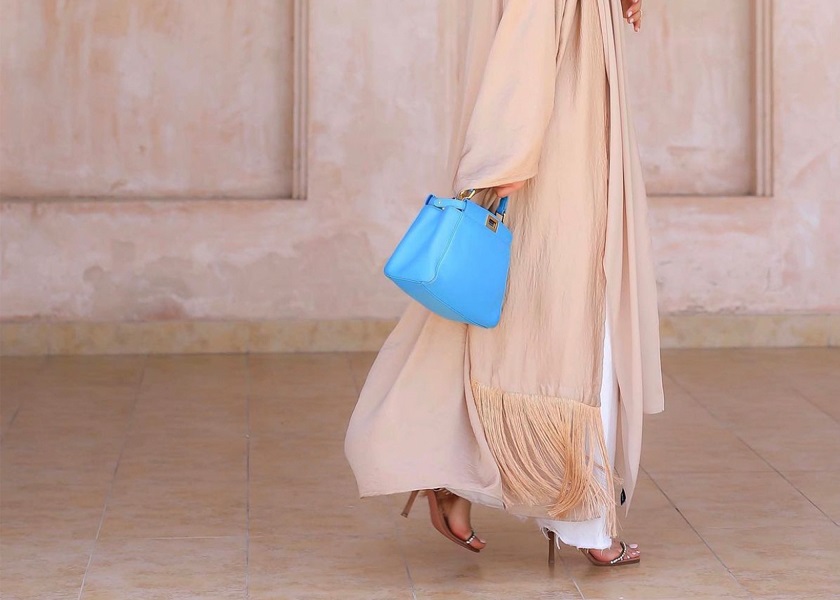 Image credit: @ihaifa.8
Image credit: @ihaifa.8Globalisation and Emirati Traditional Dress
There’s no doubt about it - the UAE is at the forefront of globalisation. Changes in technology, wealth, and migration have dramatically altered traditional life for Emiratis. Striking developments happen in all contexts as it seems new records for The World’s First or The Biggest in the World are frequent headlines. But how does modernity mix with traditional elements from the past? The changing symbolic attributions of Emirati dress to fashion illustrates this relationship. For example, introducing new colours, cuts, and materials to the Emirati abaya are becoming increasingly popular (especially amongst younger generations) even though such embodiments were not socially acceptable in the past. This blog explores how globalisation is changing the pace of trends, creating “glocal” norms, defining locality, and creating new symbolic markers in Emirati dress to fashion. 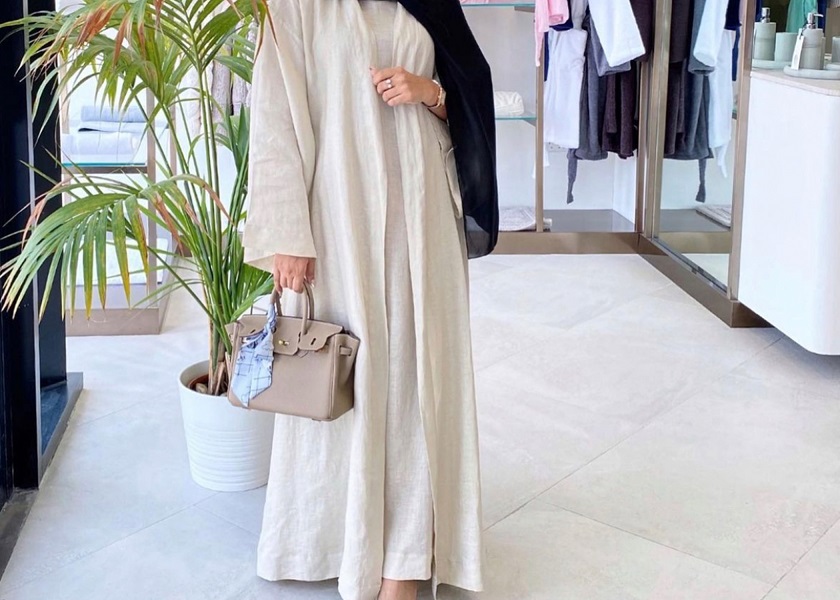 Image credit: @isnooh
Image credit: @isnoohTrends Come and Go but the Pace gets stronger
What exactly is the difference between dress and fashion/trends? Following Simmel’s (1957) analysis of this difference, fashion is used to differentiate oneself and embody cultural trends. Toeinnies (1961) expanded on fashion, describing the decline of social customs and the process of imitation, positioning dress as an established material custom. Fashion is not an inherently new concept tied to recent global forces. Modifications to Emirati traditional dress have been occurring throughout the history of the UAE. For example, the Achfah was a perfumed hair trend in the 1970s that involved rolled braids folded to form a crescent. However, the variances and pace of trends are occurring at a rate higher than before. The past decade has brought new environments that allow for various trends to thrive. Business and school settings often include a mix of nationalities and social ideals. Larger and more accommodating public spaces allow for stronger social links and reinforce trends. Intercultural marriages often bring multiple perspectives in dress ideals. These changes made through globalisation reinforce styles and behaviours. The way culture is consumed adds an additional dimension to trend influence. Dress and fashion are now not only regionally influenced, but globally influenced through social media. Instagram is described by many Emirati women as one of the most popular social channels for fashion trend consumption. “I think influencers play a big role because there are so many established local businesses for abaya or jalabiya that try to set new trends. Certain influencers go to these businesses or exhibitions and wear a certain trend, and it goes that way. Every four months there is something very new.” (25, Emirati)
Instead of trends lasting for several years, trends go through faster cycles. For example, a certain trending abaya colour or cut will last for a season. With so many new elements being added to the local dress, how are they being socially negotiated in a global and local context? 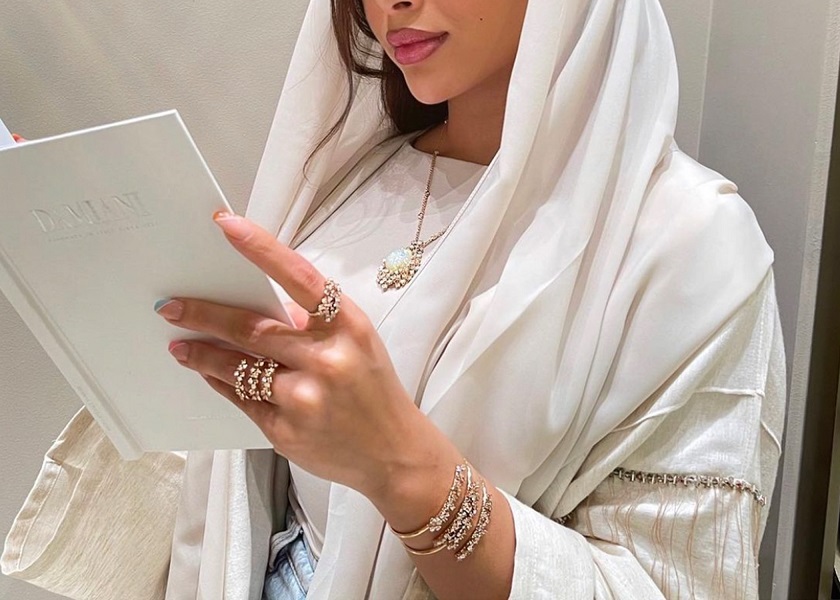 Image credit: @the.joorry
Image credit: @the.joorryGlobal + Local = Glocal
Research in globalisation shows social resilience in the local ways of doing things (Axford, 2020). The locality will “self-consciously draw on globalized strategies” to further emphasize their difference (Phipps, 2009). This relationship is known as glocalisation, whereby the local mixes with the global. Emirati dress to fashion exists within this space, as global influences are woven within local contexts and vice versa. Within the UAE, local markers are seen as a reference of distinction. Akinci (2020) explains how the national Gulf abaya is derived from Najdi
Najdī: referring to the overgarment (thawb
Thawb: (Arabic: thawb, Pl. Athwāb/thībān), can be pronounced thobe
Thobe: (Arabic: thawb, Pl. Athwāb/thībān), can be pronounced thawb or tobe
Tobe: (Arabic: thawb, Pl. Athwāb/thībān), can be pronounced thawb or thobe based on locale. The standard Arabic word for ‘fabric’ or ‘garment’. It can refer to a qamīs-like tunic worn by men and women in the Arabian Peninsula, Iraq, the southern and south-western ports and islands of Iran, and some countries in East and West Africa. More specifically, it can refer to the square-shaped Bedouin overgarment worn by women. based on locale. The standard Arabic word for ‘fabric’ or ‘garment’. It can also refer to a qamīs-like tunic worn by men and women in the Arabian Peninsula, Iraq, the southern and south-western ports and islands of Iran, and some countries in East and West Africa. More specifically, it can refer to the square-shaped Bedouin overgarment worn by women. or tobe
Tobe: (Arabic: thawb, Pl. Athwāb/thībān), can be pronounced thawb or thobe based on locale. The standard Arabic word for ‘fabric’ or ‘garment’. It can refer to a qamīs-like tunic worn by men and women in the Arabian Peninsula, Iraq, the southern and south-western ports and islands of Iran, and some countries in East and West Africa. More specifically, it can refer to the square-shaped Bedouin overgarment worn by women. based on locale. The standard Arabic word for ‘fabric’ or ‘garment’. It can also refer to a qamīs-like tunic worn by men and women in the Arabian Peninsula, Iraq, the southern and south-western ports and islands of Iran, and some countries in East and West Africa. More specifically, it can refer to the square-shaped Bedouin overgarment worn by women in the Arabian Gulf region. ) in the style of the Najd region of Saudi Arabia. culture and serves as the primary ‘invented traditions’' constructing national boundaries. These local markers are deemed important and necessary for communicating a level of prestige in society. “Before I started wearing abaya and shaila, everyone would speak to me in English - both Emiratis and non-Emiratis. I was asked constantly if I was Emirati by classmates, despite going to a public school. I’m in a way relieved now that I wear the abaya, they know somehow I am Emirati. And I’m definitely relieved that I am no longer called Sudanese” (Akinci, 2020).
National dress is proudly worn by Emiratis. It is a symbol of the nation within an environment that is constantly faced with global forces. Globalisation has therefore contributed to the establishment of what is defined as Emirati today. There cannot be ‘us’ without the ‘other.’ However, this doesn’t discount traditional dress from experiencing changes. Instead, more Emiratis seem to be contextualising the local style. New people and spaces bring ‘glocal’ approaches to dress and fashion that incorporate global ideas. This may seem more obvious when considering how Emiratis may process locality differently. 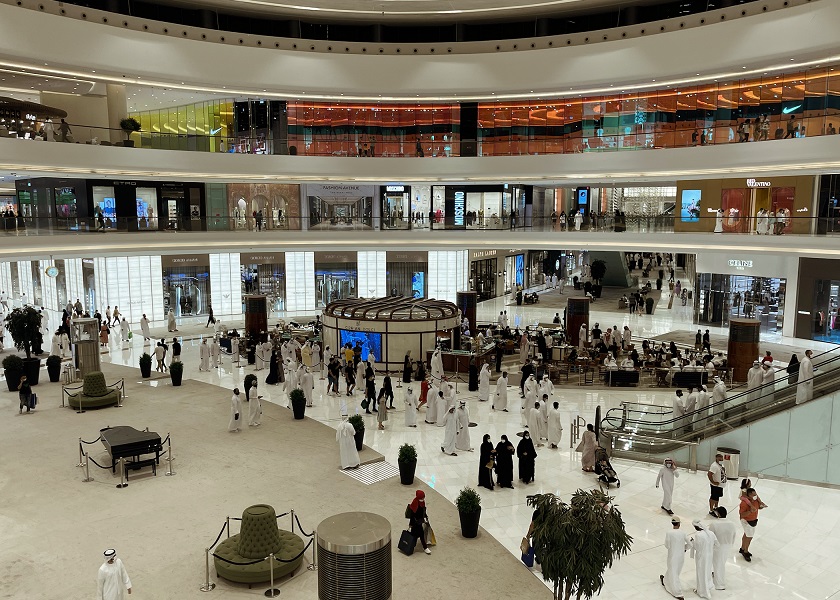 Image credit: Nicole Al Rais
Image credit: Nicole Al RaisThe Process of Emirati Assertion Through Traditional Dress
Not all Emiratis process locality the same. This coincides with research in “Emiratization of Identity'' by Dr Ardemagni (2014), highlighting that the range of diversity in the UAE created a challenge in asserting a common Emirati identity. Emiratis in my research who came from non-Bedouin backgrounds (i.e. Iran, Pakistan, etc.) and found themselves in international communities (i.e. attended international high schools), describe not feeling “Emirati enough” until either going to a local university (i.e. Zayed University) or starting work for a government organisation. Rather than assert their locality, they first accepted what it means to be local for themselves. “Yes, and you know I didn’t feel this way before, but now that Dubai is becoming so multicultural I feel the desire to represent Emirati fashion more. We are such a small percentage. Like I mentioned, I wear abaya more often now. I celebrate the culture way more.” (27, Emirati)
There are different experiences in the process of asserting locality and connections appear to be formed when having a ‘local community’ experience, like Emirati education or work. Varying assertions to this locality can be observed in the ideological significance of the national dress. As more Emiratis are claiming their locality amongst the global influx, new takes on the abaya and kandurah
Kandūrah: (Arabic: qandūrah, pl. kanādīr, synonyms: ghandurah
Ghandūrah: (Arabic, pl. qanādīr, synonyms: qandurah, darā’ah, dishdāshah, jalābah, jallābīyah, qaftan, mqta’, thawb or tobe), a loose, short or long-sleeved, shirt like (qamis
Qamīṣ: (Possibly late Latin: Camisia – Linen Undergarment; Synonym: Kamiz), a traditional loose fitting long tunic or shirt worn by both men and women in South and Central Asia and the Arab world. Typically extending below the waist it is usually paired with a pair of trousers.
) tunic with frontal neckline opening, worn by both sexes. Each Arab region has a different term for what is essentially a similar garment with various small differences., qandurah
Qandūrah: (Arabic, pl. qanādīr, synonyms: ghandurah
Ghandūrah: (Arabic, pl. qanādīr, synonyms: qandurah, darā’ah, dishdāshah, jalābah, jallābīyah, qaftan, mqta’, thawb or tobe), a loose, short or long-sleeved, shirt like (qamis
Qamīṣ: (Possibly late Latin: Camisia – Linen Undergarment; Synonym: Kamiz), a traditional loose fitting long tunic or shirt worn by both men and women in South and Central Asia and the Arab world. Typically extending below the waist it is usually paired with a pair of trousers.
) tunic with frontal neckline opening, worn by both sexes. Each Arab region has a different term for what is essentially a similar garment with various small differences., darā’ah, dishdāshah, jalābah, jallābīyah, qaftan, mqta’, thawb or tobe
Tobe: (Arabic: thawb, Pl. Athwāb/thībān), can be pronounced thawb or thobe based on locale. The standard Arabic word for ‘fabric’ or ‘garment’. It can refer to a qamīs-like tunic worn by men and women in the Arabian Peninsula, Iraq, the southern and south-western ports and islands of Iran, and some countries in East and West Africa. More specifically, it can refer to the square-shaped Bedouin overgarment worn by women. ), a loose, short or long-sleeved, shirt like (qamis
Qamīṣ: (Possibly late Latin: Camisia – Linen Undergarment; Synonym: Kamiz), a traditional loose fitting long tunic or shirt worn by both men and women in South and Central Asia and the Arab world. Typically extending below the waist it is usually paired with a pair of trousers.
) tunic with frontal neckline opening, worn by both sexes. Each Arab region has a different term for what is essentially a similar garment with various small differences. , dra’ah, dishdāshah, jallābīyah, jalābah, jillābīyah, qaftan, mqta’, thawb or tobe
Tobe: (Arabic: thawb, Pl. Athwāb/thībān), can be pronounced thawb or thobe based on locale. The standard Arabic word for ‘fabric’ or ‘garment’. It can refer to a qamīs-like tunic worn by men and women in the Arabian Peninsula, Iraq, the southern and south-western ports and islands of Iran, and some countries in East and West Africa. More specifically, it can refer to the square-shaped Bedouin overgarment worn by women. ) loose, short or long sleeved, shirt like (qamis
Qamīṣ: (Possibly late Latin: Camisia – Linen Undergarment; Synonym: Kamiz), a traditional loose fitting long tunic or shirt worn by both men and women in South and Central Asia and the Arab world. Typically extending below the waist it is usually paired with a pair of trousers.
) tunic with frontal neckline opening, worn by both sexes. Each Arab region has a different term for what is essentially a similar garment with various small differences. are being observed.  Image credit: @alqamees
Image credit: @alqameesNew Symbolic Markers in Emirati Dress to Fashion
There are certain disagreements as to the significance of the abaya - if it is a cultural, religious, or a mix of the two. No matter which position is taken, it is universally agreed upon that it is, and should always be a modest thing. However, the image of modesty is not fixed and changes on a social level. Today, general modesty ideals are moving in a more liberal direction. All Emiratis have a slightly varied approach to what it means for them. However, these variances may go unnoticed to a foreign eye. For example, women who wear abaya dominant styles may have modesty variances within makeup levels, kinds of accessories, face exposure, and hair exposure. Abaya fashion dominant styles may explore colour, cuts, and material variances. These varying ideals on modesty contribute to why being seen and accepted as Emirati is changing. A rapidly growing number of women are trying abaya fashion, and expanding conceptions on what it means to be seen as Emirati. Within the community, there are variances in clans and traditions, and new fashion embodiments may serve as a symbolic marker to these distinctions. When the UAE was initially formed, the black abaya was emphasised as a method to unite society. Today the abaya is still used as a symbolic marker of locality, but experiences variances that signify new ideas within modesty, individualism, and distinction. Author, Nicole Al Rais
Author, Nicole Al RaisAbout the Author
Nicole Al Rais is a researcher and content creator who grew up in a small rural town within San Diego, California. Her early years inspired an appreciation for community, and a yearning to learn more about alternative and inclusive ways to foster such. This led to her educational, work, and cultural experiences in various cities around the world - including New York, San Francisco, Boston, Barcelona, Rome, Sicily, and Cusco. These globalized experiences led Nicole to study how globalization affects culture, and if the local and global cultures can find a respectful intermedium. This inquisition correlates with dynamics in her personal life, as she lives in Dubai and is married into an Emirati family. Bibliography
- Akinci, I. (2020). Dressing the nation? Symbolizing Emirati national identity and boundaries through national dress. Ethnic and Racial Studies, 43(10), 1776–1794. https://doi.org/10.1080/01419870.2019.1665697
- Ardemagni, E. (2014). “Emiratization of Identity”: Conscription as a Cultural Tool of Nation-building. 4.
- Phipps, P. (2009). Globalization, Indigeneity and Performing Culture. Undefined. https://www.semanticscholar.org/paper/Globalization%2C-Indigeneity-and-Performing-Culture-Phipps/8d54db3c411b40007c3e89cabfa8eedc39d70f1b
- Simmel, G. (1957). Fashion. The American Journal of Sociology, 62.
- Tönnies, F. (1887). Community and Society. East Lansing, Michigan State University Press. https://www.routledge.com/Community-and-Society/Tonnies-Loomis/p/book/9780887387500
*Feature image credit: @fatmaa Share
Tags
Related Post
Leave a comment




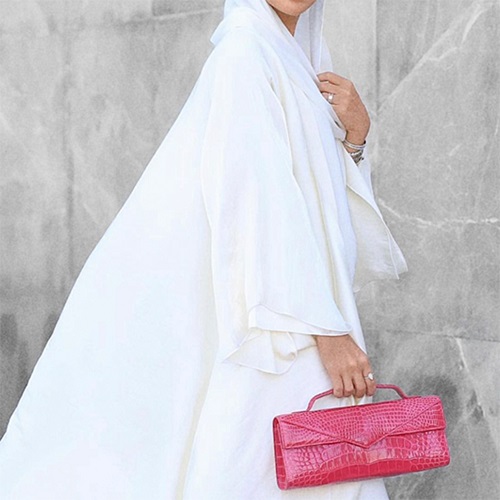
 Image credit: @ihaifa.8
Image credit: @ihaifa.8 Image credit: @isnooh
Image credit: @isnooh Image credit: @the.joorry
Image credit: @the.joorry Image credit: Nicole Al Rais
Image credit: Nicole Al Rais Image credit: @alqamees
Image credit: @alqamees Author, Nicole Al Rais
Author, Nicole Al Rais